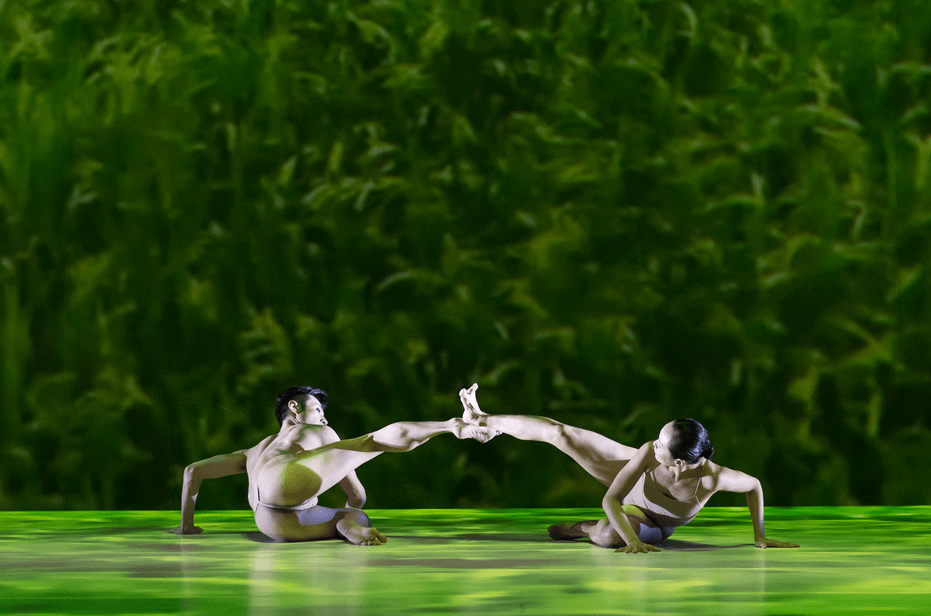BAM’s Next Wave Festival Kicks Off with the Powerful, Erotic RICE


“Rice”
photo by Jack Vartoogian c/o BAM
Cloud Gate Dance Theatre of Taiwan kicked off Brooklyn Academy of Music’s Next Wave Festival last week, celebrating 40 years of dance-making with a pastoral tribute to the people’s crop—rice, or Rice. This substantive crop of Taiwan, as well as the land in which it withers or thrives, are the central focus around which a soundscape of Hakka folk songs, drumming, Western Opera, and dancers filled the space, while a video of wind-in-the-field or smoke-in-the-field or sun-in-the-field played in the background. Cloud Gate’s leader, Lin Hwai-min, called sections of the work as “Soil,” “Wind,” “Pollen,” and “Fire,” providing both a new and ancient reason to dance. This approach, quite literally elemental, references all the dark beauty of landscapes for the audience. The ribbon was cut for BAM’s Next Wave Festival with an elegant snip.
Curtain up, a man walks across the space with a long, quivering piece of bamboo. A woman then enters, planting her feet and holding the room. She swiftly lifts her heel and then releases to the ground, the heel of the foot becoming the heel of the whole body, thunderous as it drives into the earth. The strength of this visual and audible punctuation does not, however, disguise the quivering effort of the body; the work is hard. More women enter and suddenly a chorus of heels is a work-day song, building to fluid twists of the body, the arms flashing soft shapes. This conscious moment of contact (that of heel to floor) shifts throughout the work. Body to earth, bamboo to earth, and body-to-body, the contact carries a sense of practicality, even amid the sensual.
This is especially evident in a near-naked duet that is surprisingly graphic. As literal thrusting pierces through the romantic lighting, a strange tension wedges between Hwai-min’s more lyrical choreography and the representational action he offers. At times this curious amalgamation is successfully dynamic, at other times, flattening out into a kind of melodrama. The work teeters on this line through sections with sweeping lifts, and the clean, open lines of classical partnering. Also in sections that turn inward, in which hunched and haunted spines perform isolations with a fervor akin to German expressionism. The bamboo sticks support the exquisite incorporation of acrobatics, bending so not to break.
You might also like 




















